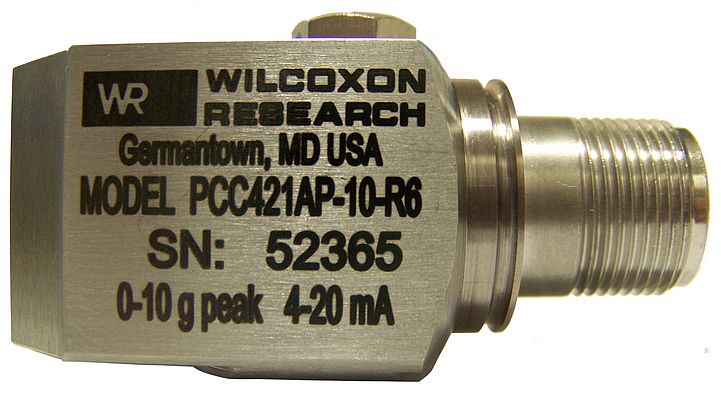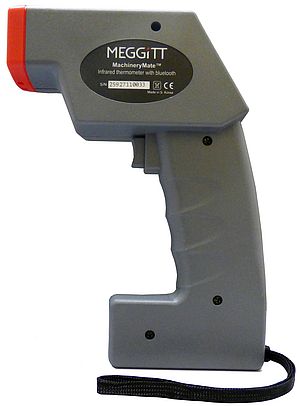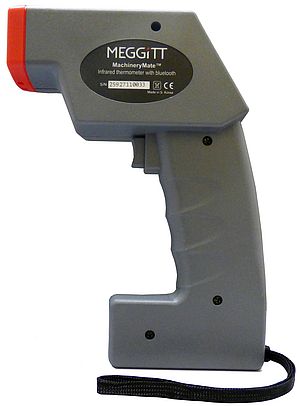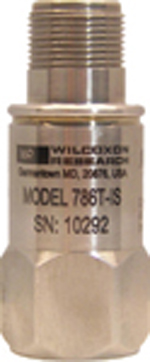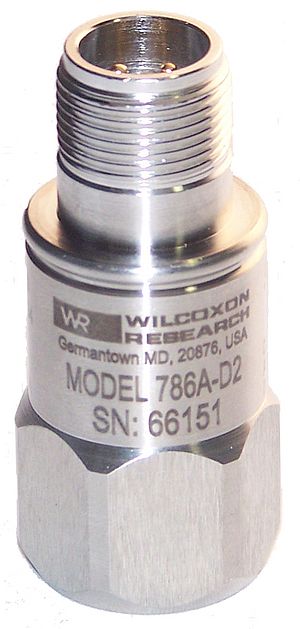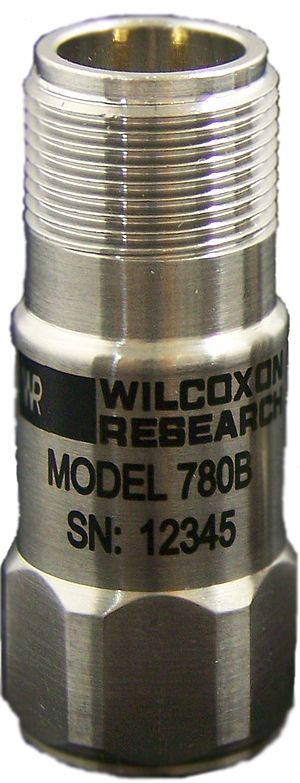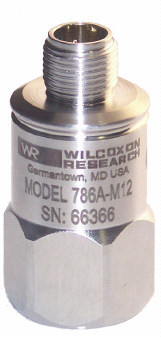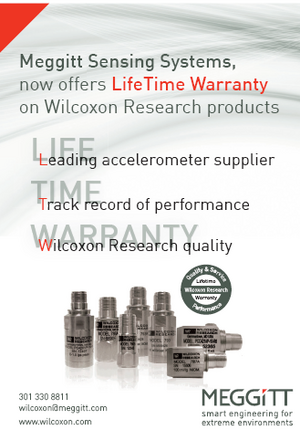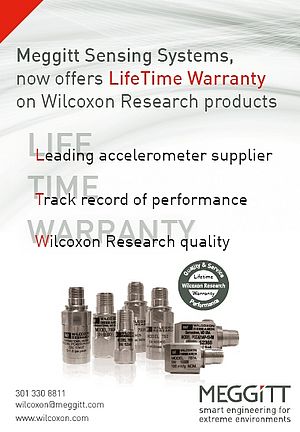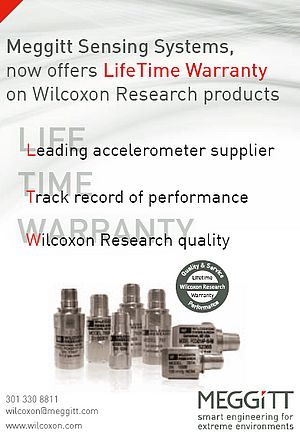Compared to previous versions, the redesigned PCC421 and PCC423 side exit 4-20 mA vibration sensors are 50% lighter in weight and have a 33% lower profile. An increase has also been achieved in their operating temperature, which is now 105° C. Connector and mounting options have been added as well. The PCC421 series is available with a traditional MIL-C-5015 connector as well as the popular M12 connector. The PCC423 is available with either general purpose or high temperature integral cable, each hermetically sealed with a glass-to-metal feedthrough. Both series can be ordered with either a 1/4-28 UNF or M6 captive mounting screw. Typical of Meggitt’s Wilcoxon Research 4-20 mA sensors, the two series are custom ordered to suit the user’s application. The customer specifies if the 4-20 mA data will be output in terms of acceleration or electrically integrated to velocity within the sensor. Peak or rms detection are available. The full scale range is also chosen by the customer, who can select from four measurement ranges at the time of order. The 4-20 mA sensors monitor rotating equipment and output a real time 4-20 mA signal proportional to the overall vibration level. By trending this real time data, plant personnel are able to schedule predictive maintenance activities around planned downtime, saving time and money in costly unexpected repairs. Integrating this signal into an existing PLC, DCS or SCADA system simplifies real time health monitoring because vibration, formerly considered too complex, can now be trended in easily understood units. Applications for 4-20 mA vibration sensors include compressors, motors, vibrating conveyors, seal-less pumps, chillers, gearboxes, pumps, exhaust fans, reciprocating compressors, blowers, cooling towers, mixers, gas/steam turbines and centrifuges. A wide variety of 4-20 mA vibration sensors are available to suit individual monitoring needs. Sensors are available with top exit or side exit connectors; intrinsically safe and explosion proof ratings; output of acceleration, velocity or displacement; overall vibration level calculation based upon rms, peak, true-peak, or true peak-to-peak detection; and dual monitoring of vibration and temperature.
Vibration Sensors
50% lighter in weight than previous versions
- by Meggitt Sensing Systems
- August 25, 2011
- 823 views



